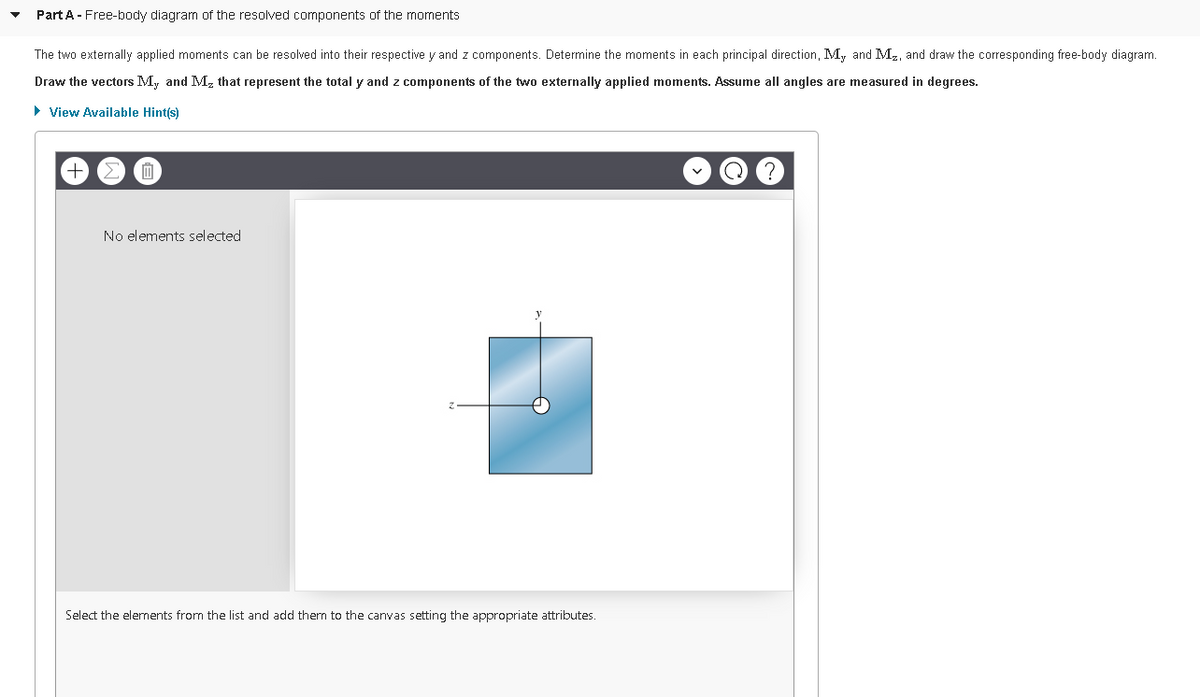Part B - Moments of inertia of the cross section with respect to the y- and z-axes To calculate the absolute maximum bending stress in the member using the flexure formula for unsymmetrical bending, the moments of inertia of the cross section must be calculated. Select the correct formulas for these values. Iy=? Part C - Neutral-axis angle due to externally applied moments The neutral-axis angle of the cross section being analyzed is the axis along which there is a zero stress value. Determine the neutral-axis angle, α, due to the externally applied moments as measured counterclockwise from the positive z axis in the yz plane. Express your answer to three significant figures and include the appropriate units. α=? Part D - Absolute maximum stress in cross section ABCD Determine the absolute maximum stress, |σmax|, in cross section ABCD due to the two externally applied moments. |σmax|=?
Part B - Moments of inertia of the cross section with respect to the y- and z-axes
To calculate the absolute maximum bending stress in the member using the flexure formula for unsymmetrical bending, the moments of inertia of the cross section must be calculated. Select the correct formulas for these values.
Iy=?
Part C - Neutral-axis angle due to externally applied moments
The neutral-axis angle of the cross section being analyzed is the axis along which there is a zero stress value. Determine the neutral-axis angle, α, due to the externally applied moments as measured counterclockwise from the positive z axis in the yz plane.
Express your answer to three significant figures and include the appropriate units.
α=?
Part D - Absolute maximum stress in cross section ABCD
Determine the absolute maximum stress, |σmax|, in cross section ABCD due to the two externally applied moments.
|σmax|=?


Trending now
This is a popular solution!
Step by step
Solved in 4 steps with 7 images


